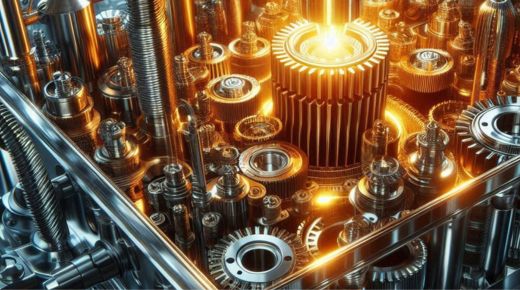Optimizing Machine Components Through Metal Impregnation

Durable and reliable equipment parts are critical in many industries, such as manufacturing, aerospace, and automotive. However, they tend to suffer cracks, inadequate sealing, or porosity issues, diminishing their performance. One solution for such performance issues is metal impregnation, which improves the physical properties and extends the lifespans of machine parts.
Understanding This Technique
Metal impregnation is a process wherein imperfections, such as tiny cracks and pores, are filled with resin, wax, or alloys like copper and nickel. It enhances durability, sealing capacity, and wear and corrosion resistance, producing more airtight, robust, and resilient components. This systematic treatment involves several steps:
- Cleaning: The components are cleaned thoroughly to remove grease, oil, and other surface impurities that can interfere with the whole process.
- Impregnation: The parts are immersed in the impregnant by vacuum or under pressure to fill the micro-defects.
- Curing: Afterward, the items are cured by heat or cooling, depending on the impregnant used. This step solidifies the reinforcement material in the pores and creates a dense and well-sealed structure.
- Finishing: Finally, the components are cleared of excess surface materials and inspected. With their flaws repaired, they’re ready for their intended use.
Various metals, including aluminum, brass, bronze, carbon graphite, copper, iron, and zinc, are suitable for impregnation. Note, however, that impregnation affects metals differently. For example, this technique gives aluminum better fluid resistance but mainly improves corrosion resistance for iron and copper.
Why Metal Impregnation is a Game-Changer
This reinforcement of metal products impacts their performance and longevity, regardless of application. Its advantages are widespread, including:
- Airtight Sealing: Impregnation effectively seals porous components, making it suitable for compressors, pumps, valves, and other fluid system parts.
- Increased Mechanical Strength: Sealing cracks and pores enhances the strength and durability of machine parts, allowing them to withstand mechanical wear better.
- Corrosion Resistance: This method adds an extra layer of protection against early deterioration and corrosion. It is beneficial for metals prone to oxidation, like copper and aluminum.
- Versatility: The treatment can be used on diverse metals and alloys, making it highly adaptable for many industrial applications.
- Cost-Effectiveness: Manufacturers can use metal impregnation to salvage and reuse parts with porosity issues and flaws. It minimizes production scraps and saves more costs.
How It Changes Carbon Graphite Parts
Metal impregnation significantly improves graphite components’ strength, thermal conductivity, chemical resistance, and performance. The end products are perfect for high-stress applications under harsh conditions where traditional products might otherwise wear down more quickly. These upgrades made impregnated carbon graphite indispensable for some demanding applications, such as:
- Aerospace: Metal-impregnated jet and aircraft components remain leak-proof and strong under high pressures and extreme flight conditions. These include actuators, coolant connectors, electronics enclosures, and fuel and hydraulic system pumps and valves.
- Automotive: Metal-impregnated parts help automobiles achieve superior performance, durability, and reliability. Examples include air conditioning compressors, brake system parts, electric vehicle batteries and motors, and powertrain components.
- Manufacturing: Industrial production requires components that retain structural integrity in operations and are free of microscopic voids. Because of that, many manufacturers opt for metal-impregnated bearings, gears, bushings, precision tools, and seals.
- Oil and Gas: Drilling and extraction operations require parts that can prevent leaks and endure corrosion and high pressures. Through metal impregnation, downhole tools, pumps, seals, and valves can perform excellently under such conditions.
Technique Considerations
Although the metal impregnation process offers incredible benefits for high-performing equipment parts, it still has certain limitations. These include:
- Compatibility: The impregnant must be compatible with the machine part’s base metal. Otherwise, the part may have insufficient bonding and fail.
- Porosity: Machine parts must have a degree of porosity or micro-cracks to qualify for the impregnating material to permeate well.
- Thermal Sensitivity: The temperatures at which impregnants can withstand matter. Resins, for example, cannot handle high temperatures, meaning they cannot be used in as many applications as alloys and plastics.
- Cost and Time: The metal treatment process can be expensive and time-consuming depending on the component’s size and complexity. This issue is most evident for specialty parts.
Conclusion
Metal impregnation is a favorable solution for creating higher-performing machine parts for diverse applications. It boosts their mechanical strength, sealing capacity, and durability and extends their service lives. The technique may have limitations, but its immense benefits on metal and carbon graphite components make it a worthy operational investment.
